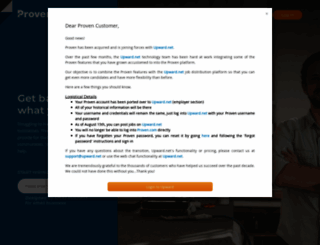Get Proven's Complete Hiring Solution to easily manage all of your hiring needs.
Page Load Speed
1.4 sec in total
First Response
100 ms
Resources Loaded
975 ms
Page Rendered
332 ms

About Website
Click here to check amazing Proven content for Pakistan. Otherwise, check out these important facts you probably never knew about proven.com
Proven is #1 job post site for small businesses. Post jobs instantly to to multiple job boards with one click.
Visit proven.comKey Findings
We analyzed Proven.com page load time and found that the first response time was 100 ms and then it took 1.3 sec to load all DOM resources and completely render a web page. This is quite a good result, as only 25% of websites can load faster.